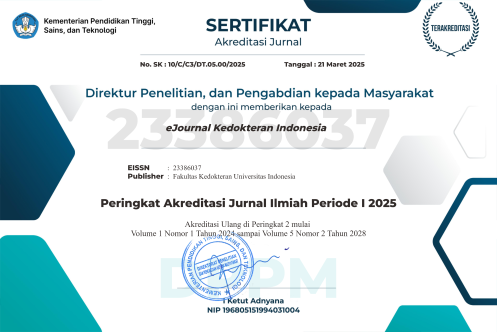Expression of TGF-α and TGF-β3 Proteins in the Incidence of Cleft Lip and Palate in East Nusa Tenggara
DOI:
https://doi.org/10.23886/ejki.13.947.3Keywords:
Cleft lip, Cleft palate, Proteins, TGF-α, TGF-β3Abstract
A cleft lip (CL) is a gap in the upper lip caused by unconnected tissues before birth, often found alongside a cleft palate (CP). In Indonesia, the prevalence of orofacial clefting is around 1:1,596. The incidence is multifactorial and polygenic. This study aimed to assess the expression of TGF-α and TGF-β3 proteins in endemic clefts of East Nusa Tenggara. This study used a cross-sectional method to analyze lip epithelial tissue from patients with nonsyndromic CL/P. The research was conducted at the Bioscience Laboratory, Central Laboratory of Life Sciences, and Biomedical Laboratory, Universitas Brawijaya. This research started in April 2023 until October 2023. The study involved laboratory preparation, paraffin block and preparate making, and immunofluorescence staining. The tissues were infiltrated with soft paraffin, trimmed, and thinned. The data was analyzed using Image J with a threshold of 20-100 and an independent t-test. TGF-α protein expression showed significant differences between East Nusa Tenggara and control, but no significant d ifference in TG F-β3 ex pression. Th is research showed that TGF-α expression in the East Nusa Tenggara region is lower than control. This incidence may be due to inbreeding. Low TGF-β3 expression in patients with cleft palate only (CPO) is due to the complex development of the palate. The study reveals that low expression of TGF-α and TGF-β3 proteins in the East Nusa Tenggara region contributes to cleft lip and palate incidence, affecting cell proliferation and palatal shelf adhesion.
Downloads
Downloads
Published
How to Cite
Issue
Section
License
Copyright (c) 2025 Herman Yosef Limpat Wihastyoko

This work is licensed under a Creative Commons Attribution-NonCommercial 4.0 International License.
Accepted 2025-04-11
Published 2025-05-04



